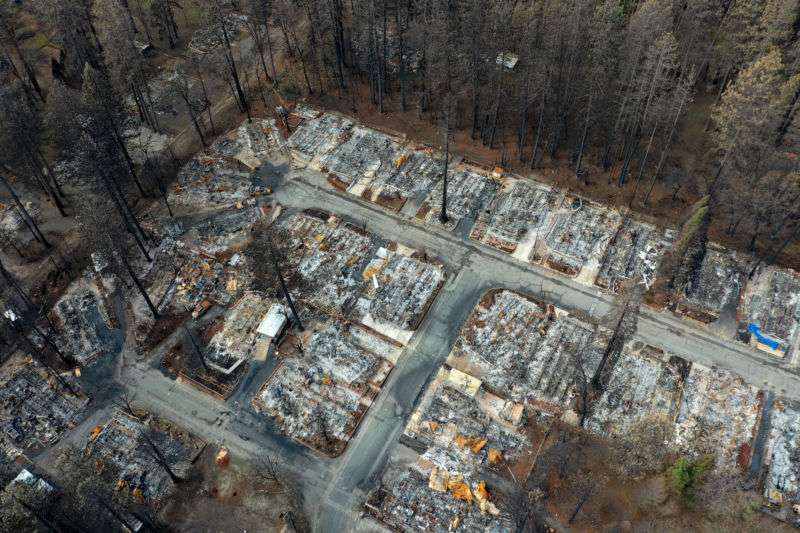
PG&E: It’s likely our equipment was “ignition point” for deadly Camp Fire

In a statement on Thursday, California utility Pacific Gas and Electric (PG&E) told investors that it would take a $10.5 billion charge related to the deadly Camp Fire that burned through Northern California in November of last year.
“Although the cause of the 2018 Camp Fire is still under investigation, based on the information currently known to the company and reported to the California Public Utilities Commission (CPUC) and other agencies, the company believes it is probable that its equipment will be determined to be an ignition point of the 2018 Camp Fire,” PG&E told investors.
The utility goes on to state that its Caribou-Palermo 115 kilovolt (kV) transmission line deenergized approximately 15 minutes before a PG&E employee observed a fire in the vicinity of a tower on the line. In addition, “a suspension insulator supporting a transposition jumper had separated from an arm” on the tower in question.
Just yesterday, the Wall Street Journal reported that PG&E delayed upgrades to the Caribou-Palermo line for five years. “The company told federal regulators in 2013 it planned to replace many of the towers, wires and hardware pieces on the line,” the WSJ reported. The transmission line runs through some very difficult-to-access territory, climbing over inaccessible ridges and winding across the Feather River. Some of the Caribou-Palermo line’s components are nearly a century old, dating back to when the line was installed in 1921.
The California Department of Forestry and Fire Protection is still working on an official determination of who was at fault in the Camp Fire. It was one of the deadliest wildfires in the state’s history, killing 85 people.
PG&E’s Thursday announcement also included a $1 billion charge related to wildfires that its equipment caused in Northern California in 2017.
Moving forward, looking back
The utility filed for bankruptcy protection in January, requesting that a judge allow the company to restructure and renegotiate energy contracts in the face of looming debt.
PG&E has also been required to submit a wildfire mitigation proposal for the coming summer in California. The company said that it will more aggressively shut off power in response to “extreme weather events and dry vegetation conditions.” It also promised “significant expansions” in “vegetation management, inspections of electric distribution and transmission facilities, system hardening, enhanced controls, and other programs.”
According to the WSJ, some of the necessary changes will come in the form of overhauling PG&E’s record keeping system, which makes it difficult to track where transmission lines are being upgraded and what parts of PG&E’s massive system still need attention. “Until 2015, the company said in a state regulatory document, [PG&E] used ‘paper wall maps and push pins’ in control centers to track electricity-distribution system operations.” That’s despite the fact that the utility manages 70,000-square-mile area and provides power to 16 million people.
Between 2014 and 2016, PG&E received approval from regulators to spend $97 million on overhauling its record-keeping system. “By the period’s end,” the WSJ wrote, “the company in filings estimated it had spent only 15 percent of that on the effort because of technological challenges and used the rest for other projects.”




